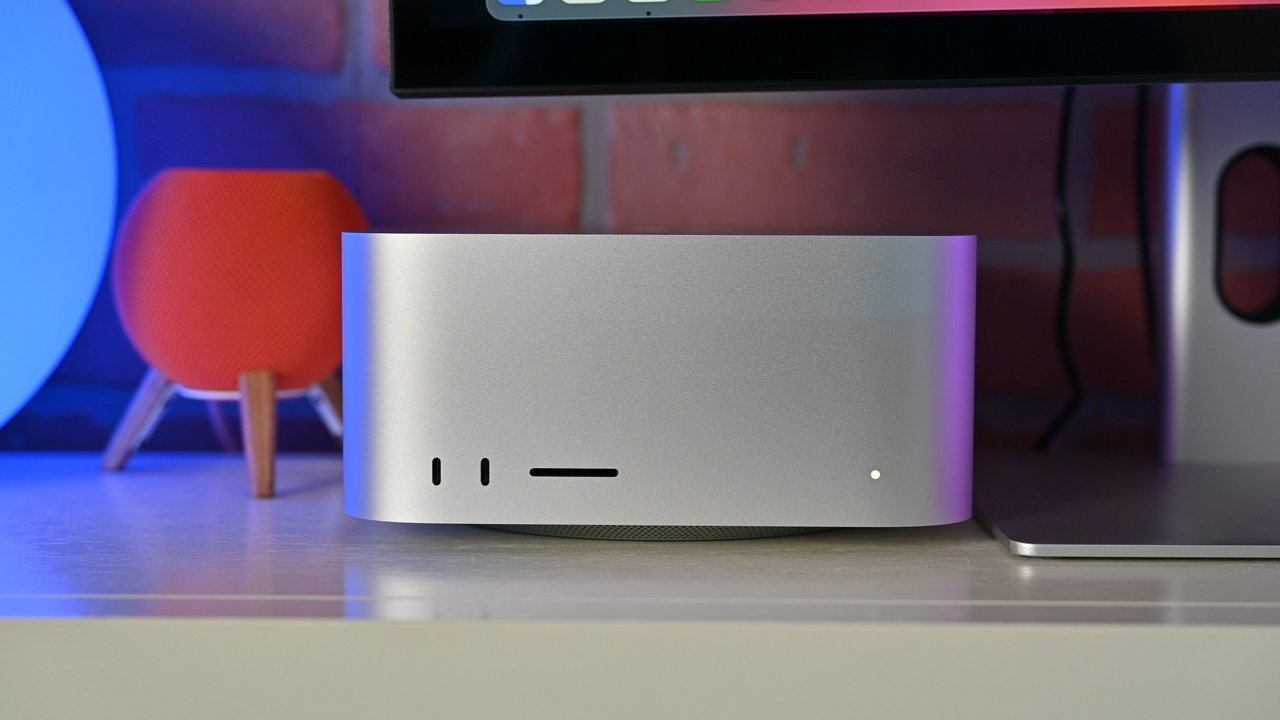Late 2025 for M4 Mac Studio & Mac Pro seems more certain now
A new report detailing the migration of Apple's Mac line to M4 is out, and it doubles-down on previous rumors that it's going to take a bit longer than a year for a Mac Studio or Mac Pro upgrade.

Mac Studio and Mac Pro may stick with M2 chips until 2025.
The Mac Studio and Mac Pro got their most recent refreshes at the 2023 WWDC. Fans of Apple's Pro desktops may be in for a wait if they want a M4 version.
In the weekly Power On newsletter from Bloomberg, there are a few more details. Specifically, the Pro-level Macs aren't expected until the tail-end of the M4 migration process.
And, that tail-end is still expected to take until the second half of 2025.
This is not the first time that this has been said. The most recent iteration of the schedule was in May, but it's been fairly consistent for about six months.
Apple's M3 chip debuted with Pro and Max versions out of the gate, at the October 2023 MacBook event. The M1 chip started at the base of the line, and worked their ways up to Pro, Max, and Ultra.
It took over a year for M1 to get an Ultra variant. The M1 Ultra debuted in the refreshed Mac Pro and then-new Mac Studio.
Apple's M1 and M2 chips in Mac Pro and Mac Studio had clear interconnects, so a chip like the Ultra was a clear possibility relatively early. The M3 does not have this obvious interconnect, so it's possible Apple had this road map in mind all along.
It's also not the first time a Mac has skipped a generation. The iMac went from M1 to M3 processor, for instance.
Relatively speaking, Apple does not sell that many Mac Studio or Mac Pro units. The company's flagships remain the MacBook Air and MacBook Pro lines -- and it's not close.
Rumor Score: Likely
Read on AppleInsider

Comments
I've been hoping that ACDC would mean more Ultra-class chips would be made, providing better economies of scale for investing in these high end chips than if these chips only showed up in desktop Macs. I hoped this would then translate into more frequent updates of the desktop lineup.
Now we know ACDC really does exist, but so far there's no evidence that it benefits the Mac desktop (although not much time has passed, so we don't know much yet).
But if ACDC does not benefit the Mac desktop, then two possible reasons occur to me:
1. Maybe ACDC uses totally bespoke chips, not Ultra-class chips, and so there is no economies of scale that benefits the Mac desktop.
2. Maybe the demand for Ultra-class chips for Apple's data centers is so great that it's crowding out the Mac desktop, at least in the short to medium run (but then maybe the economies of scale benefits will kick in longer term).
Microsoft is currently doing a Recall on a brain dead feature while Google and OpenAI have been reduced by Apple into just a possible add on to the features included in the Apple Intelligence ecosystem. The time is now.
https://www.notebookcheck.net/Qualcomm-Snapdragon-X-Elite-Analysis-More-efficient-than-AMD-Intel-but-Apple-stays-ahead.850221.0.html
https://www.notebookcheck.net/Apple-M4-SoC-analysis-AMD-Intel-and-Qualcomm-currently-don-t-stand-a-chance.839332.0.html
I invested heavily in a Mac Studio M2 Ultra with 4TB of SSD, correctly predicting that it would be a long time before it was dethroned as Speed King. I was correct.
Apple cut the memory bandwidth on the M3 SoCs, likely because nothing was talking advantage of it, and they probably also wanted to get energy and power down some. Since there’s no M3 Studio or Pro, we can’t know if they’d do the same for that, but likely would.
https://daringfireball.net/2024/06/wwdc24_apple_intelligence
Maybe it’s totally fine with Apple right now if nobody wants to buy an M2 Ultra Mac, because maybe Apple wants those chips going into their data centers. And when m4 ultra comes out, maybe it will go into data centers before it goes into Macs.
The M3 family caters to Apple's most important macOS hardware (MacBook Air/Pro, also iMac), and it will get another moment in the sun when Sequoia shows it's as good or better than the A17 Pro with regard to Apple Intelligence.
M3 also stands as real-world evidence that Apple intends to keep the monolithic (base, Pro, Max) M-series silicon on pace with TSMC's logic roadmap, like the A-series, which means annual updates. We should be celebrating that.
M3 also proves Apple is not going to keep the Ultra on the same cadence. I think there is enough flexibility in the upcoming N3P -> N2 -> N2P -> A16 progression that Apple could use an 18-month average for the Ultra, rather than 24-month. So it will skip every third generation, not every other generation.
M4, then, will be the first step in the next step [!] for the Ultra. One thing that is poorly understood in general is just how cutting-edge UltraFusion was. M1 Ultra was the first product to use InFO-LSI (TSMC's answer to Intel's EMIB) advanced packaging, before Nvidia, before anyone. Like years ahead, not just months. But TSMC hasn't been standing still in the interim: 3DFabric has also been progressing. There will be announcements about this in September again this year. UltraFusion 2 could be on the horizon.
Apple isn't dragging its feet, as some of the comments above suggest. It's quite the opposite. They're pushing the envelope for both performance and efficiency.
Unless you're training models, which an absurdly small amount of users will do, very few people 'need' an M4. All your creative apps will always feel 'not fast enough'.
M4s are in market. Not buying Apple is going to push this into 2025.